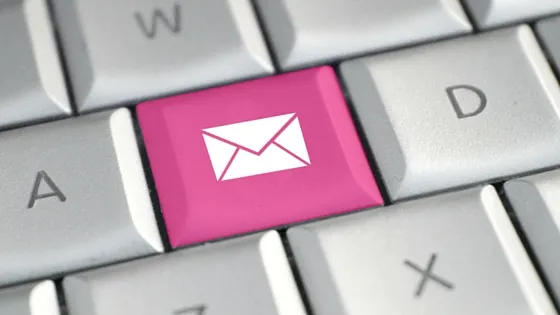Your Competitor’s Marketing Emails are ‘Eating Your Lunch’ – And Here’s Why
In 2020, email marketing is still the most effective method of attracting and retaining customers. And the businesses that are still implementing solid strategies for marketing emails are seeing upwards of 4400% ROI! That translates into earnings of $44 for every dollar spent on email campaigns.
The results are obvious for what marketing emails can deliver. But, despite these potential results, the average marketing budget only includes around 13% on email marketing.
Here’s what your competition is doing to take the lead. Learn from their tactics and you just might be able to reclaim your share of the market.
1. Your Competitor takes time to learn about their audience
Knowing more details about your target audience helps your competitor engage with them in a meaningful way. Your audience is not monolithic and do not want to be talked at as thought they are. In order to be competitive, you need to identify some of the following info:
- How and when does your audience prefer to be communicated to?
- Are there words or terms that your audience uses that you should include in your messaging?
- What activities or interests set your audience apart from the general population?
2. Your Competitor experiments with messaging and images to see what gets the better engagement rate
The time it takes to test different messages could be quickly offset by a higher conversion rate in the final communication, and your competitor knows it. From subject lines to your calls to action (CTAs), many variables will influence the engagement rate of your audience. Here are some testing tips that you should keep in mind:
- Test one element at a time to understand your results
- Use a large enough sample size to give you better results
3. Your Competitor uses a production checklist every time they send marketing emails
The Checklist Manifesto, written by Atul Gawande, addresses the complexity of the world and how repeatable processes can be best handled with checklists. From pre-flight checklists for pilots to post-operative checklists for surgeons, a checklist can be a vital – even life-saving – tool.
Although there have not been any known deaths related to a poorly written business email, your competitor knows that a checklist helps to protect against ‘death by embarrassment’.
The following is a sample checklist (taken directly from your competitor’s desk) that you might use to create your own:
- Customize your ‘From’ name
- Write clear and short subject lines (spend 3x on writing subject lines as you do the body of message)
- Personalize your email content message
- Create a compelling CTA (‘call to action’)
- Make it easy to unsubscribe (this is a legal issue)
- Provide your physical address in the email
- Say ‘thank you’ for their time and attention
4. Your Competitor stays focused on metrics that matter
Engagement metrics can become very confusing, very quickly, if you are not careful. Your competitor has solved this problem by identifying the goal of the communication and determining a few key metrics to focus on. You can use their tactics as well, such as:
- If you wanted a particular message in the email to be received, the ‘Open Rate’ would be a good indicator that the recipient saw the message.
- But, if your email is providing an ‘offer’ that requires the recipient to click on a link to a landing page, the ‘Click Rate’ is more important.
Just don’t get focused on all of the metrics that are not related to your communication goal.
5. Your Competitor personalizes their emails
Personalization continues to be important, and your Competitor knows it. They can sometimes talk to their audience like old-time buddies. (That’s gonna cost you.) But how can they do that?!
The more points of data your Competitor (or you) have can further personalize the communication. (Think about the last time you received a birthday discount from your local ice cream store just days before your birthday.)
Look for opportunities to gather a little bit more data from your audience. Initially, it may just be their email. Later, you can ask them for their full name. Later still, request their birthday and/or zip code. Finally, you will start to learn their buying habits. All of this information will help you to gain a fuller picture of your audience members.
6. Your Competitor knows that quality beats frequency (always)
Your competitor knows that it is better to ‘wow’ their audience once a month than to bother them several times a month. Frequency rarely makes up for boring.
For that reason, your Competitor starts slow. Building audience and engagement through well-crafted communications helps the audience to look forward to the next message.
And as they gain more specific demographics, they can start communicating to each specific segment at different frequencies.
7. Your Competitor has made the effort to determine the best time to send their communications
The question of “When is the best time to send an email?” does not have a single answer. The answer will depend upon the market and demographic.
Your Competitor has taken the time to test different send days and times to understand how their particular audience engages with marketing emails. Over time, the ‘best time’ becomes apparent.
8. Your Competitor matches the email message to the landing page message
A lot of time is spent on the writing and creation of marketing emails. But for all of that effort, your Competitor knows that all of that work could come to naught if the email call-to-action invites the reader to click on a link that takes them to a disjointed or misaligned webpage.
If your email communication is seeking a ‘conversion’ of some kind, make sure you send the email reader to a webpage that matches their expectations.
A ‘landing page‘ is generally a dedicated web page that is not located on the website navigation and is intended to be seen only by a particular audience. This landing page is set up to expressly communicate a single message and/or offer. And it should not have any other distracting features, such as any navigation menu.
So, if your email communication says “Get our special offer!”, make sure that the landing page you send them to clearly says “HERE’S YOUR SPECIAL OFFER”. Any variation of message and you risk reader confusion, and a high ‘bounce rate’ off of that landing page. Rarely is a general info page or the website home page an appropriate landing page.
Now that you have some background on how your successful competitor is beating you with their marketing emails, it’s time for you to ‘up your game’. Put as many of these tactics into action as possible, and see if you can’t beat your competition in the months to come.








